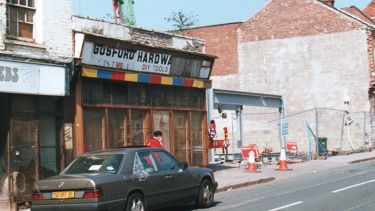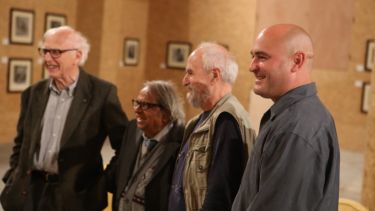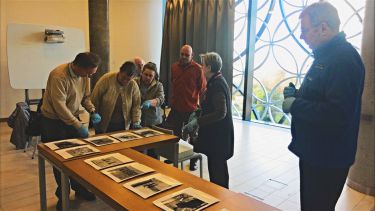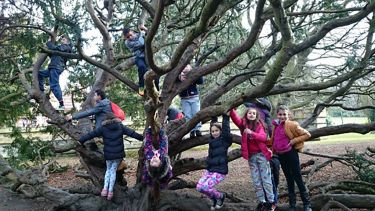The Historical Context

Introduction
This work package is exploring the historical evolution of imaginings of community from the perspective of different participants/stakeholders. In particular we are examining the plans for ‘manufacturing’ or ‘developing’ communities according to visions of policy makers and politicians and the extent to which these cohered with, influenced or were challenged by realities, aspirations and actions of residents, community workers, other professionals and agencies.
Fieldwork is based in Tyneside (Benwell and North Shields) and Coventry (Hillfields). These three areas were all part of the Community Development Project (CDP) in the late 1960s/early 1970s. This was the first British government-funded programme to tackle poverty in areas that were regarded as ‘deprived’. It will examine the imagining, planning and impact of each local CDP and track subsequent area-based regeneration projects/programmes to the present.
Aims:
- To explore changing inter-relationships between ‘imagined communities’ of politicians, policy-makers, professionals and residents in community-based regeneration from the late 1960s to the present;
- to use the insights from this project and the three other components to engage in imaginings of future communities.
Main Leads: Sarah Banks, Durham University and Mick Carpenter, University of Warwick.
Coventry (University of Warwick) Projects
- Hillfields Happening: Blakemore Masterclasses
- Hillfields Happening: Exhibition in August 2015
- Community Photography
- Visit to Birmingham Central Library to see the Blakemore Collection
Tyneside (Durham University) Projects
- A Journey Through Time
- Benwell in Felt
- Bridging the History
- Filming Change
- Growing Old in West Newcastle
- Patchwork Youth
- Imagining Community at Cedarwood
- Oral History Training and Support
- Playing with Change and Ideas
- Remembering Benwell
- Time Traveller
- West End Stories
Coventry (University of Warwick)
A team from the Department of Sociology at the University of Warwick is researching Hillfields, the site of one of the Community Development Projects (CDPs) in the 1970s which sought to eliminate area-based disadvantage, the first of numerous regeneration efforts since. The area has been re-imagined many times. Originally envisaged as an artisan community of independent silk weavers in the 19th century, it became a thriving industrial community in the first decades of the twentieth century. However bomb damage, planning blight, and inward migration led to it being by-passed by Coventry’s post-war boom, and matters worsened in the years of recession and industrial decline during the 1970s and 80s. Today it remains one of the poorest and most socially diverse areas in the UK, severely affected since 2008 by economic downturn and public sector austerity. Yet it has also recently been re-imagined by city planners, through the creation of the Swanswell learning quarter and the Fargo cultural quarter, and so the future for the area is again being debated. But by whom and for what purposes? If the area is to play its part in Coventry’s wider development how can residents, planners and policy makers jointly learn from the past to understand the present and transform the future?
Research website: Imagine Hillfields (www.imaginehillfields.org)
Hillfields Happening: Blakemore Masterclasses
Our summer project, Hillfields Happening, began with John Blakemore giving two days’ of masterclasses to the students of photography at Coventry University. John’s focus was on the art of the printer – and in an era of digital imaging and software filters the art of using chemicals and light may be forgotten.
Using Coventry University’s equipment John produced a series of photographs about life in Hillfields from the negatives he has kept since he lived on Vernon Street in the 1960s as well as some of his more well-known artistic work on tulips where he uses the printer’s art to create effects. The images he produced will be exhibited at FarGo Village in August.
Thanks to ESRC/AHRC Imagine, Heritage Lottery Fund at FarGo Village and Arts Council Funding, we have begun to explore how the future for Hillfields is represented: who is in on these conversations, how do they happen and what is the balance of power between planners, residents, policy makers and workers? Jason Tilley is currently starting a new body of social history photographs as a response to John Blakemore’s 1960’s photographs of Hillfields. This project, called 100 Portraits of Hillfields, will seek to capture Hillfields life as Jason sees it, but also as it is presented to him. John’s and Jason’s images will sit opposite each other in the FarGo exhibition in August this year.
Other work at the exhibition will include Nick Stone’s images of Hillfields past and present and a retrospective of Richard Sadler’s early work in Hillfields with photographs taken from the 1950s. We will also be including a series of events to examine other ways the area has been thought of: including film and student exhibitions, walks, lectures and debates.
Hillfields Happening: Exhibition in August 2015
Friday 14th August played host to a successful launch of the Imagine Hillfields exhibition. The exhibition questioned what Hillfields is, has been and thus might be; whose visions have shaped the space and community; how city and community visions may collide; and the need to create a methodology and mechanisms for policy discussion at a community level. See more photographs here.
The Imagine team at University of Warwick is part of a collaboration that will see the public critically engage with an exhibition of photographs of Hillfields life and regeneration from the past fifty years. The collaboration is between Fargo Village, Coventry University, Hillfields History Group, the Library of Birmingham, and four photographers: John Blakemore, Jason Scott Tilley and Richard Sadler, all from the Hillfields area of Coventry, and Nick Stone, a photographer specialising in re-imagining the past and present within a single image. The project brings together money from ESRC/ AHRC Connected Communities, Heritage Lottery Fund, City Labs, Birmingham Library and Arts Council England. More here.
Community Photography
Our first project sought to understand Hillfields today. Working with WATCH, a local charity, and Herbert Media, local residents were recruited to explore how the people of Hillfields worked, played, worshipped and rested. The result was hundreds of images, ten of which were exhibited at the Herbert Museum in Coventry during November and December 2014. More here.
Visit to Birmingham Central Library to see the Blakemore Collection
John Blakemore is probably the UK’s master analogue printer and Emeritus Professor of Photography at Derby University. He lived in Hillfields until 1965, capturing a post war world that had persisted for twenty years. His collection resides at the National Photographic Archive at Birmingham Library. We took the Hillfields History Group to explore Blakemore’s images of Hillfields, bringing contextual understanding to the team of curators and much joy to the history group.
A Journey Through Time
A Journey through Time is an Imagine North East project coordinated by Phoenix Detached Youth Project in North Shields. The project started in January 2014 and completed in January 2015. A Journey through Time was designed as an intergenerational urban art project led by local people to look at the history of urban art in the area, how its culture has changed and how it has influenced social change. More here.
Benwell in Felt
St James’ Centre for Heritage and Culture Partnership coordinated this project using the craft of felting to explore and imagine the local community in the past, present and future. The Benwell and Scotswood area has a long and interesting history. It has recently undergone major changes, and more changes are expected. The felting pictures built on residents’ knowledge, experiences and hopes to depict this story. More here.
Bridging the History
Meadow Well Connected is running a community-led oral history project focusing on the history of the Meadow Well Estate. Since the end of 2013 they have been working with a group of local residents to share memories and experiences of living on the estate, and to create a timeline of key events and changes. More here.
Filming Change
St James’ Heritage & Environment Group is engaging the local community in exploring and discussing its history through a film-making project based around the historic graveyard in Benwell. More here.
Growing Old in West Newcastle
Search is running a programme of events and activities focusing on key periods and themes in the history of the local area. Field trips, drama, song, and other activities will be used to bring together residents of different ages to explore and discuss their experiences of living through decades of change in West Newcastle. More here.
Patchwork Youth
Patchwork Youth Project in Benwell are making a film with the title of “Hopes and Fears”, exploring young people’s experiences of life in the area and how they imagine the future. The project involves training young people in editing and other film-making skills. More here.
Imagining Community at Cedarwood
Cedarwood Trust is running a community research project. They are exploring the history of the community on the Meadow Well Estate in North Tyneside through a family history approach, using oral history, drama, creative writing, family history research and other methods. More here.
Oral History Training and Support
Remembering the Past, Resourcing the Future and Living History North East are working with the Imagine North East project to give practical support in developing and running the local projects in each community. Pictured here are participants in an oral history training workshop held during Spring 2014. More here.
Playing with Change and Ideas
The Riverside Community Health Project is based in a former Victorian library building in the middle of Benwell. It works with local families and children. They are planning to create a huge interactive mobile toy from recycled materials. They are working with local children, families and other residents to develop ideas for this toy and to build it with help from specialist artists, musicians and others. More here.
Remembering Benwell
West Newcastle Picture History Collection is a volunteer-run community group who collect photographs of the west end of Newcastle. They have more than 19,000 images of the area in the past. As well as collecting and maintaining the collection, the group runs regular drop-in sessions at the West End Library and also takes the collection out into the community with slide shows and displays. More here.
Time Traveller
Pendower Good Neighbour Project is working with children and older people on an intergenerational project called Time Traveller. They are researching the changes in the local area during the past 40 years using creative activities such as drama, film and reminiscence. More here.
West End Stories
Tyne and Wear Archives and Museums (TWAM) are providing support, expert advice and help to the other community partners, making the museums’ and archives’ collections available for the research, and accessing some of the outputs of the local projects to the permanent collection at Newcastle’s Discovery Museum. More here.







